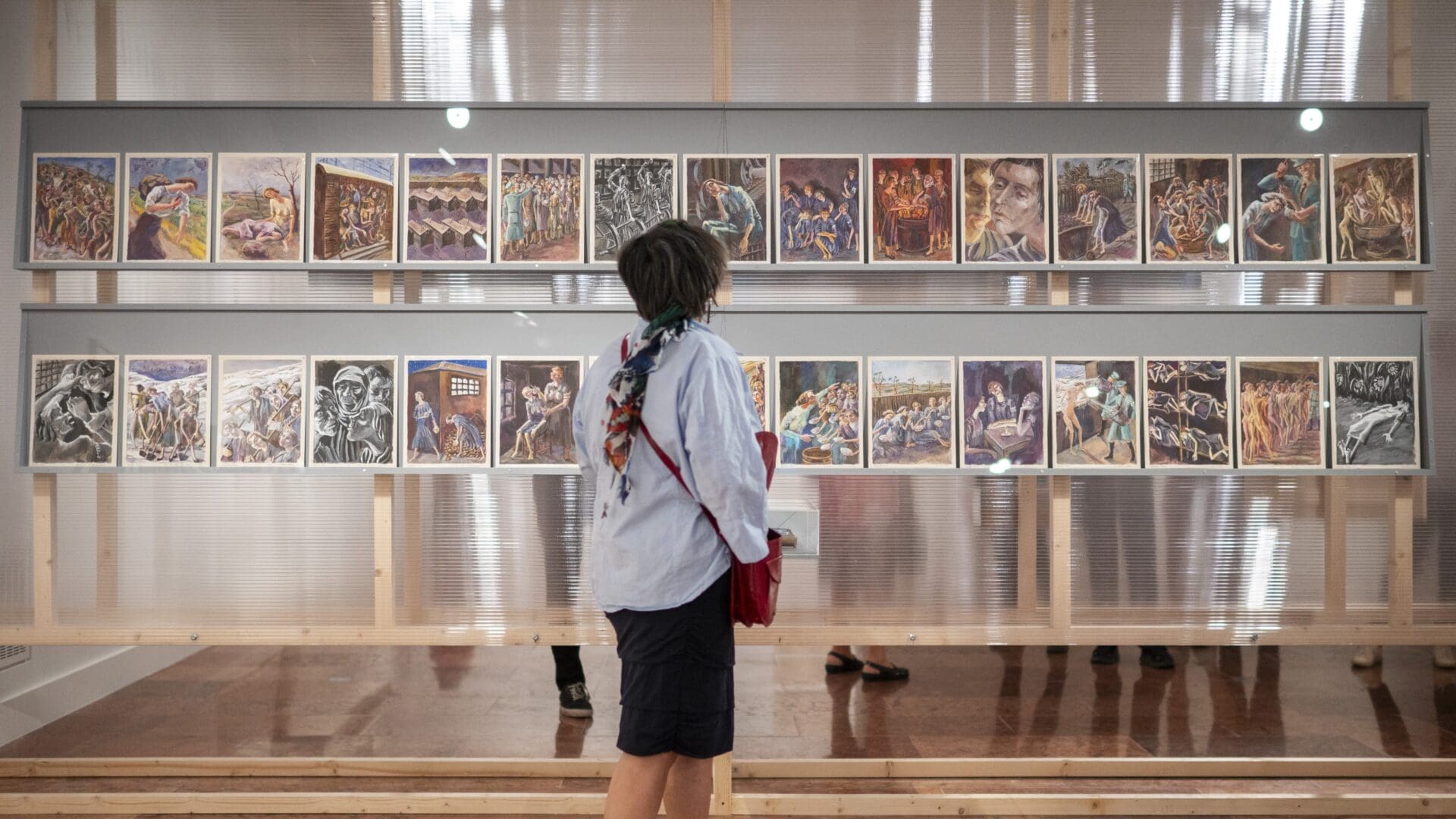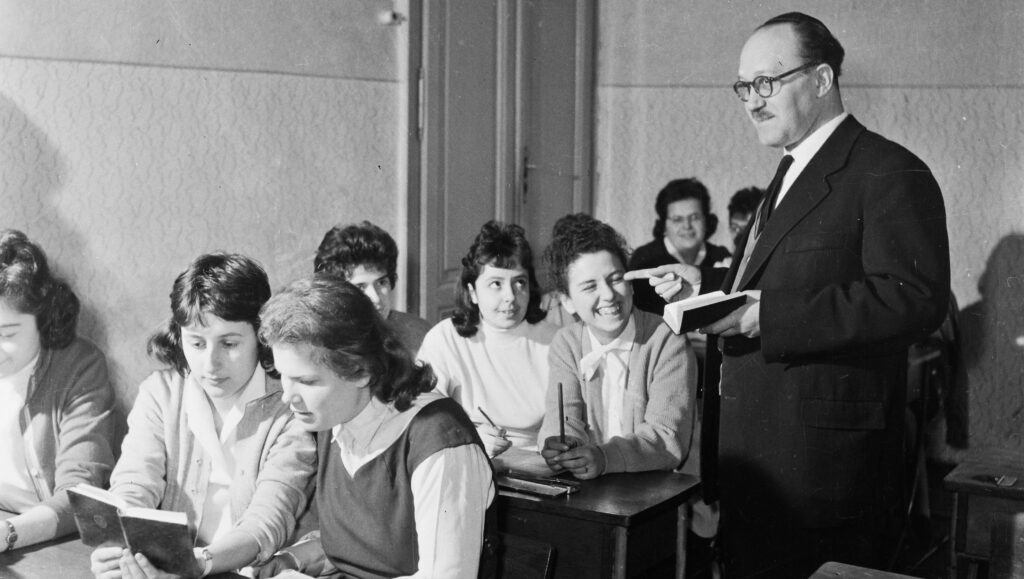Thirty artists depict the memory of the Hungarian Holocaust, which began eighty years ago, in the exhibition titled This Is How It Happened–The Early Memory of the Holocaust Through Witness Artists’ Creations, which can be seen in Budapest at the Hungarian National Gallery (MNG) starting Wednesday.
Eighty years ago marked one of the most tragic and shameful periods in Hungarian history, with the establishment of the first ghetto in Hungary. László Baán, director of the Museum of Fine Arts–Hungarian National Gallery emphasized this during the press event for the exhibition on Monday.
Baán recalled that one month after the establishment of the ghettos in Hungary, trains began to depart for Auschwitz with hundreds of thousands of our Hungarian compatriots, who were taken to the ‘slaughterhouse.’ Hundreds of thousands of them were sent to the gas chambers upon stepping out of the wagons. The Holocaust claimed nearly half a million Hungarian victims, the director reminded. On the occasion of the anniversary, the victims are honoured with an exhibition featuring the testimony of witness artists. The exhibition mainly showcases drawings by survivors for the public to see, Baán explained. The exhibition, open until 21 July, presents the series of drawings of about 30 artists, including those of Béla Kádár, Endre Bálint, and Ilka Gedő. These unique and often reproduced graphic albums depict the everyday lives of concentration camps, ghettos, or forced labour in a narrative, figurative, and sometimes comic book-like form.
The exhibition presents the memory of witnesses, with most of the works created between 1944 and 1947, stressed Zsófia Farkas, art historian at the Hungarian Jewish Museum and Archives, and curator of the exhibition, during Monday’s press tour.
The exhibition also illustrates how artists transition from strongly journalistic and documentary drawings to more symbolic representations, becoming more abstract in their creations, and shifting the focus from personal to collective memory, the curator pointed out. The last section presents graphics depicting war criminals, including Sándor Katz’s drawings from the Jerusalem Eichmann trial.
Zsófia Farkas pointed out that during the Kádár era there was a strong tabulating and silencing discourse regarding the Holocaust in Hungary. However, immediately after liberation, there was a strong intention to testify. Despite the many traumas experienced by artists since the 1920s, including the Jewish laws and persecution, they had the courage and resilience to draw the daily lives of the ghettos, hiding paper scraps to draw in concentration camps, and portraying each other’s daily lives even in forced labour, emphasized Farkas. She noted that there were few tools available to artists in ghettos and concentration camps, so they made drawings, and after liberation, graphics remained the primary means of expression for the artists.
The drawings exhibited were distributed in multiple graphic albums by the creators, who wanted to document what happened. Prefaces accompanied the albums, in which they described what they went through, whether they could ever process it, and how important it was for the whole world to know what happened to them so that such atrocities could never happen again. Some wrote the prefaces in a foreign language to ensure that the albums reached every corner of the world, added the curator.
After liberation several drawings were featured in exhibitions, but these works then fell into oblivion and were not seen for many decades. However, in recent years, due to a paradigm shift in Holocaust research it has emerged that many recollections were produced by writers and artists in the immediate post-war period in 1945 and 1946, Farkas reminded.
Related articles:







